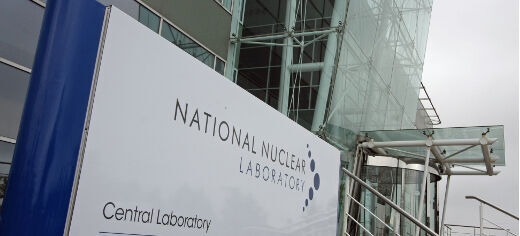
Taking inspiration from nature, researchers have created a versatile model to predict how stalagmite-like structures form in nuclear processing plants - as well as how lime scale builds up in kettles.
“It’s a wonderful example of how complex mathematical models can have everyday applications,” said Dr Duncan Borman, from the School of Civil Engineering at the University of Leeds, a co-author of the study.
The main aim of the research, which is published in print today in the journal Computers & Chemical Engineering, is to reduce the number of potentially harmful manual inspections of nuclear waste containers.
“We were approached by the National Nuclear Laboratory and Sellafield Ltd to solve the problem of predicting the shapes that precipitates from nuclear process solutions can form in containment chambers,” said Dr Borman.
Study co-author Professor Daniel Lesnic from the School of Mathematics at the University of Leeds, added: “Our first thought was to find a suitable analogy in nature. At first we looked at how lava flows from a volcano to the ocean, but the formation of stalagmites in caves mimics the process much more closely.
“Geologists have well-established models for the formation of stalagmites. So we are taking models from one field of science and applying them to a completely different discipline.”
Within the nuclear industry, hazardous salt solutions can arise within industrial containment vessels. The salt solution precipitates out, forming structures with strange morphologies that bear a resemblance to stalagmites. If left unchecked, they could build up and cause a problem in the nuclear containment chamber. Currently, these containment chambers are checked regularly to prevent this from happening.
In the study, the researchers used an existing model for predicting stalagmite growth over millions of years as a starting platform. To take into account the full complexity of the mechanism by which the solid is formed, the model was then adapted to include the chemical and physical properties of the particular salt solution of interest to the nuclear industry, a more realistic fluid flow, and to consider the sensitivity of results to varying temperature.
Lead author of the study, Dr Mike Dawson from the School of Chemical and Process Engineering at the University of Leeds, who started the research during his PhD studies, said: “It took many months of intensive research to develop the model. The big test came when we tested the model against real data from the National Nuclear Laboratory.
“Our model stood up to the test. For the first time it was possible to predict the morphology of these complex crystallising flows reliably.”
Dr Borman said: “This breakthrough provides a new tool for the National Nuclear Laboratory and Sellafield Ltd, with the potential to save both money and continue to ensure they are at the forefront of world-leading safety technology.”
The new model also has wider application to other industrial and domestic situations where a salt solution precipitates out and causes problems, such as forecasting the precise shape and location of build-up in pipes or heat exchangers – or how lime scale will collect within a kettle.
Dr Borman said: “The processes underlying the build up of lime scale in a kettle are remarkably similar: the flow of a liquid containing a dissolved mineral – in this case calcium carbonate from hard water – over a surface of changing temperature, can result in solids precipitating out and leaving the build up of solid material behind.
“Using the model we have developed, manufacturers could improve the design of kettles such that these unwanted build-ups are minimised by repositioning filaments or designing them so that deposits form in locations that are easy to clean.”
Further information
The research paper, Moving boundary models for the growth of crystalline deposits from undetected leakages of industrial process liquors, is published in the journal Computers & Chemical Engineering on 4 December 2014.
Mike Dawson’s research was funded by a CASE PhD studentship offered by the National Nuclear Laboratory, Sellafield Ltd and the Engineering and Physical Sciences Research Council (EPSRC).
The researchers are available for interview. Please contact Sarah Reed, Press Officer at the University of Leeds, on 0113 343 4196 or email s.j.reed@leeds.ac.uk
Image credit: NNL